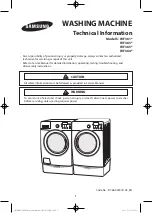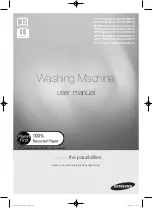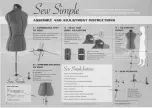
27
Sewing on Patches or Appliqués
To cover large holes it is necessary to sew a
new piece of fabric onto the damaged area.
Baste the new piece of fabric onto the dam-
aged area on the right side of the fabric.
6HZRYHUWKHIDEULFHGJHVZLWKWKH]LJ]DJRU
the three-step zigzag stitch.
Trim the damaged area close to the seam
from the wrong side of the fabric.
=LJ]DJWKUHHVWHS]LJ]DJWKHFORVHGRYHUORFN
stitch or the honeycomb stitch can be used to
PDNHDSSOLTXpV
Pin or baste a patch to your fabric/project
and stitch around the edges with any of the
stitches.
Darning with the
Three-Step Zigzag Stitch
A small hole or tear is easily darned with the
three-step zigzag stitch.
6HZRYHUWKHGDPDJHGDUHDLQURZVXQWLOLWLV
well covered. Make sure that the rows over-
lap.
Tip: To make the darning even sturdier, place a
fabric underneath the hole/tear before sewing.
Repairing Tears
On tears, frayed edges or small holes it is
useful to lay a piece of fabric on the wrong
side of the fabric. The underlayed fabric rein-
forces the damaged area.
Lay a piece of fabric underneath the dam-
aged fabric. It must be a little larger than the
damaged area.
6HZRYHUWKHGDPDJHGDUHDXVLQJWKH]LJ]DJ
or three-step zigzag stitch.
Trim the piece of fabric used as reinforce-
ment.
Set for three-step zigzag
Sew patches or appliqués
Darning with three-step zigzag
Set for zigzag stitch
stitch
1-2
5
3-5
0
stitch
2
4-6
3-5
0
Repairing tears










































